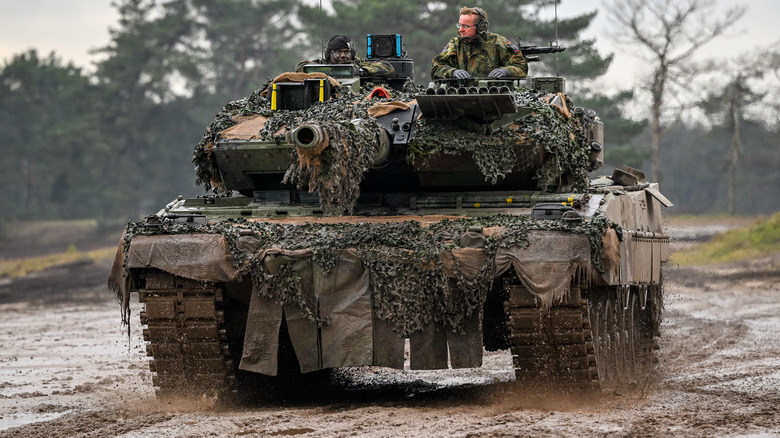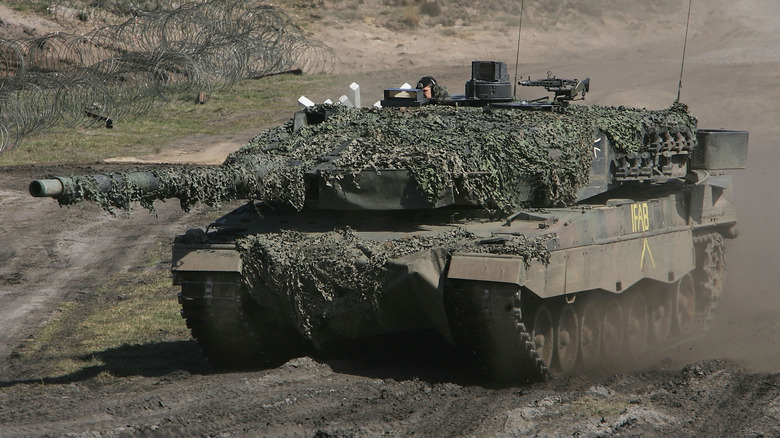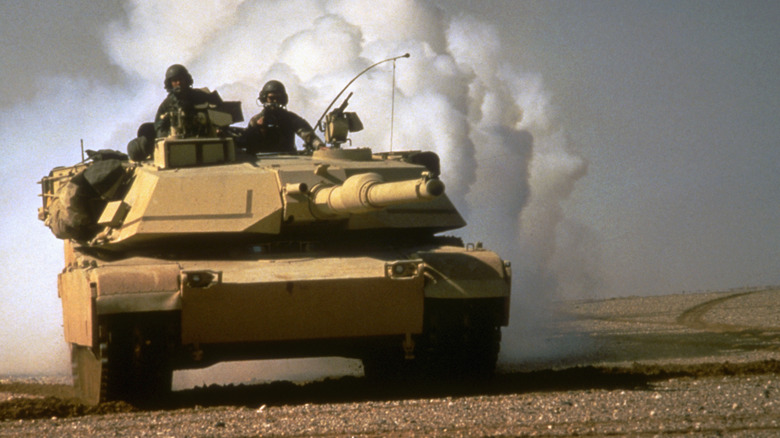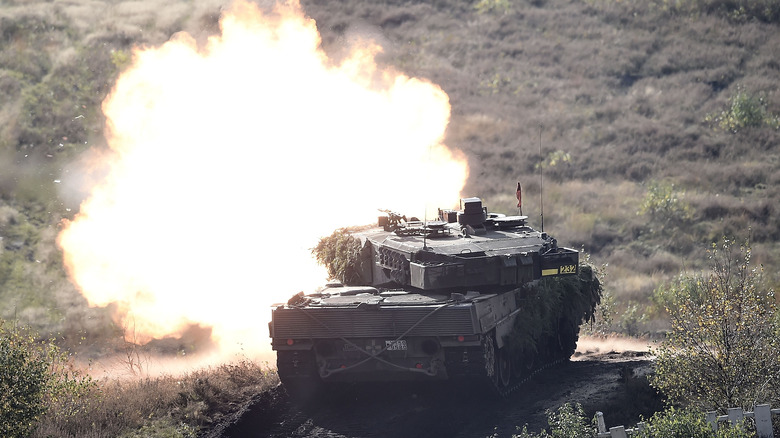M1 Abrams Vs Leopard 2: Which Is The Better Tank?
Ever since tanks first arrived on the battlefield in World War I, well over a century ago, tracked armored combat vehicles have been a necessity in combat, even now in the age of drones and cyber warfare, on modern fronts in Ukraine and the Middle East. For NATO forces, two of the most prominent tanks are the American M1 Abrams and the German Leopard 2. Both main battle tanks are multi-ton technological marvels of modern engineering in their own ways and both are being given to Ukrainian troops fighting the Russian Federation's arsenal of tanks.
Given that both the United States and Germany are decidedly allies and part of NATO, it's highly unlikely an Abrams would ever square off against a Leopard 2, but it begs asking the question. Given the choice between them, what is the better tank for a 21st century conflict. Does the M1 Abrams have enough turbine-driven muscle to eke out a victory over the Leopard 2. Or will the classically solid German engineering of the Leopard 2 propel itself to the spot of top tank?
Germany's big cat, the Leopard 2
The Leopard 2 is produced by German defense manufacturer Krauss-Maffei Wegmann and has been in steady service since the late 1970s. A total 19 of countries, including most of Europe and Canada, use it. It was also used extensively in operations in Afghanistan. Despite debuting several decades ago, the Leopard has been outfitted for 21st century fights thanks to its modular architecture and a steady stream of upgrades. The main difference between the M1 Abrams and the Leopard 2 is the powerplant, as the German tank is powered by a turbodiesel V12 made by MTU, a division of Rolls-Royce. The diesel engine throws down around 1,500 horsepower and can propel the tank to about 42 miles per hour and has a reported combat range of about 280 miles.
The big cat's main gun is a Rheinmetall L44 120 mm smoothbore cannon that's capable of firing a wide variety of ammunition. Plus, the outside hull provides numerous mounting points for small arms like crew served machine guns and grenade launchers. As far as armor is concerned, the exact specifications are classified and a closely guarded secret of the German military as the tank is still in active service. It is reportedly capable of keeping the crew safe against improvised explosive devices and anti-tank weapons.
American turbine muscle, the M1 Abrams
The M1 Abrams is an unmistakable symbol of American military might. It's huge, almost always painted a desert tan, fast, and kind of looks like it was rendered on a PlayStation 1. Much like the Leopard 2, the Abrams first came into play in the late 1970s. The Gulf War served as a test arena for the Abrams. There, it saw considerable combat and was instrumental in success against Saddam Hussein's armored defenses.
For most operations, the M1 Abrams is equipped with the M256 cannon, also known as the Rheinmetall L44, the same as the Leopard 2. The Abrams also has a top speed of around 42 miles per hour, and its powerplant generates 1,500 horsepower. But the Abrams get its propulsion from a Honeywell turbine motor that drinks jet fuel as its primary fuel source, although it can be modified to utilize other fuel sources. Much like the Leopard 2, the Abrams' armor is classified, but it reportedly utilized depleted uranium and a composite of materials to protect its crew.
The verdict
The Abrams and the Leopard 2 are very similar tanks and even share a gun. Both have comparable top speeds and power output. The armor is unfortunately an unknown factor, but given the fact that both tanks have been in service in multiple theaters by NATO countries for decades, there likely aren't too many glaring issues or ultimately superior points that make one tank's armor the clear winner in combat.
However, the Leopard 2 would likely be able to achieve a very narrow victory. Not because of some secret weapon or borderline magic capabilities. it would boil down to simple boring logistics. The Leopards 2's diesel powerplant is simply easier to feed and supply. The Abrams on the other hand has to deal with the headache of hauling around jet fuel, often several miles from a plane. Diesel can power the tank itself and all the support vehicles around it. In the long run and for a force that doesn't have the same logistical backbone of the United States military, the Leopard 2 could very possibly stay in the fight longer. According to CNN, the Leopard 2 is in high demand for Ukrainian soldiers due to its ease of use and maintainability.



